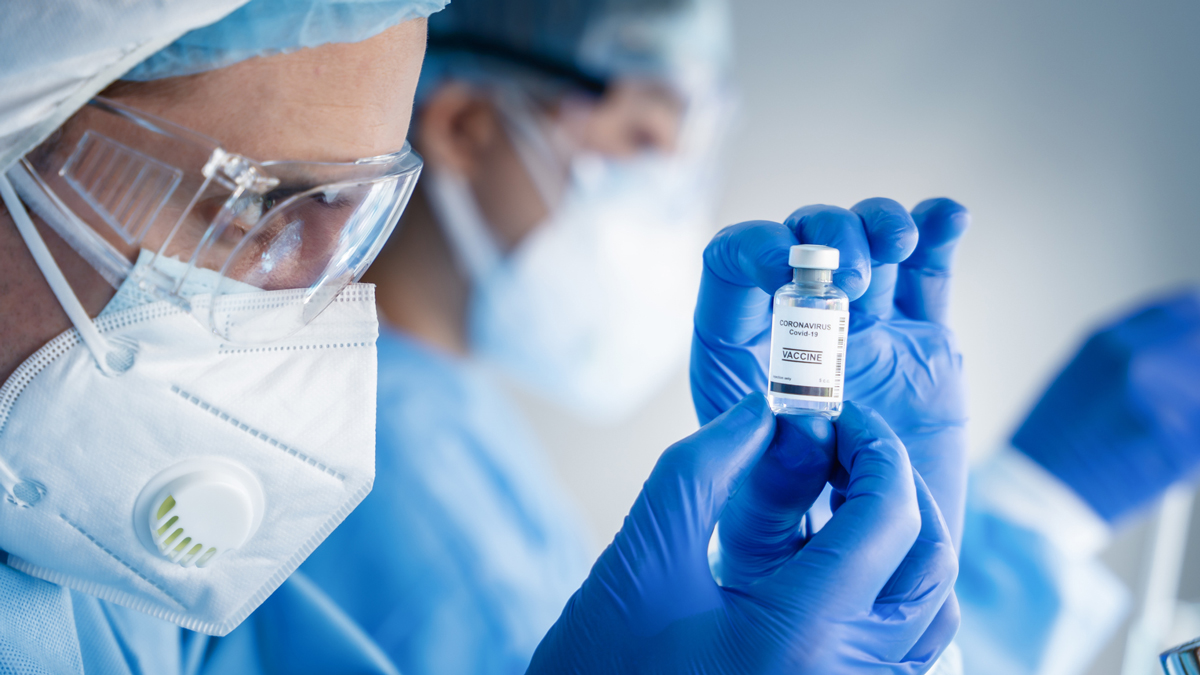Does the pandemic mark a turning point in vaccine development?

After a period where vaccine development had fallen away, suddenly it is back in the limelight. Investment has flowed back into the sector and Ben Hargreaves finds how this is changing the infectious disease pipeline, as well as how the industry is seeking to address weaknesses in manufacturing capacity.
There are very few things to be grateful for about the arrival of the pandemic. However, for those individuals working on vaccine development, the pandemic has proven to be a validation of the important work being carried out in the field. The significant investment and importance placed on the creation of vaccines against COVID-19 has spurred numerous breakthroughs, not least with the emergence of the first approved mRNA vaccine.
The funding directed into accelerating the development of COVID-19 vaccines resulted in the successful and rapid creation of solutions that are now being utilised to curtail the worst of the pandemic. More than just providing a lifeline against the current pandemic, however, the investment has also found its way to those companies specialising in broader vaccine development. This has catapulted forward work being done to produce vaccines against various infectious diseases and rejuvenated a field that had previously been struggling for investment within the pharma industry.
The ‘poor relation’
Pfizer reported its full year 2021 results last month and predicted sales of $32 billion for its COVID-19 vaccine in 2022, adding to sales of $36 billion managed in 2021, alongside its partner, BioNTech. Moderna also published its financials last month, predicting 2022 sales of between $17 and $22 billion, after having previously earned $17.7 billion from its vaccine in 2021. With the unprecedented situation of the pandemic, there has arrived unprecedented revenue in the vaccine development space.
However, the financial success that has been delivered to certain companies working on vaccine development has emerged after a long period where investing in the space had become increasingly unpopular among the larger pharma companies. As a spokesperson for CureVac, a vaccine-focused biopharma company with a pipeline targeting various infectious disease, explained to pharmaphorum: “pre-pandemic, vaccine development was viewed almost as the poor relation of pharmaceuticals, despite the obvious success of most vaccines.”
The reason behind this was the lack of return on investment. Figures published by the US government, found that US retail drug spend on vaccines lagged far behind other therapeutic classes in 2009. These figures had increased by 2019, but they still lagged far behind other, more lucrative areas, such as oncology, diabetes, and autoimmune disorders. This has led the proportion of the global pipeline of potential therapies dedicated to oncology to grow from 26.8% in 2010 to 37.5% in 2021, suggested figures published by Citeline. By comparison, IQVIA research showed that treatments targeting infectious disease represented just 6% of the 2019 late-stage active pipeline.
Renewed interest
However, with COVID-19, there has been proof that there is a financial reward to be had if an effective vaccine can be introduced where there is urgent demand. GSK had benefited from this a few years prior, when it received approval for Shingrix, a vaccine used for the prevention of shingles (herpes zoster). Due to its above 90% efficacy at preventing shingles, the vaccine quickly became a blockbuster success for the company, to such a degree that Pfizer and BioNTech are now looking to establish themselves in the same market.
Now, the pipeline for products in infectious diseases is growing once again. According to figures published by Deloitte, the number of infectious disease assets in the pipeline has tripled since 2020 – though this is mostly driven by COVID-19-related assets, there are other candidates being developed amid increased levels of funding available for those working in the space. There have also been lessons learnt during the course of the pandemic, particularly in regard to the emergence of mRNA vaccines as a viable therapeutic solution — currently to protect against COVID-19, but future applications could well be broader.
The spokesperson for CureVac explained, “The herculean efforts to ensure a successful COVID vaccine campaign worldwide produced a great deal of new data and learning. The industry now has an opportunity to capitalize on this and explore new avenues of vaccine and therapeutic development based on mRNA, such as cancer vaccines and treatments for indications where there is a need to express intracellular proteins, inhibitors, or modulators.”
On a more basic level, the pandemic has also highlighted the importance and value of vaccines. “COVID-19 has drastically enhanced the public profile of vaccine development and, in doing so, increased recognition of the full value chain – from lab to clinic”, Dr Juan Carlos Jaramillo, chief medical officer of Valneva, told pharmaphorum.
Valneva has been a beneficiary of this effect, after recently being awarded £20 million in funds from the Scottish government to further develop its COVID-19 vaccine and to support R&D associated with its manufacturing processes for other vaccines. Alongside its vaccine candidate for COVID-19, VLA2001, the company is also progressing VLA1553, a single-shot vaccine candidate against the mosquito-borne viral infection chikungunya.
According to Dr Jaramillo, the investment will support the development of its manufacturing site in Livingston, Scotland, as he identified manufacturing capacity as one of the ‘key challenges’ highlighted by the pandemic.
Manufacturing challenges remain
There is an interesting parallel between the early stages of both the Shingrix and COVID-19 vaccine launches, which was the difficulty in scaling manufacturing in line with demand. The early success of the Shingrix vaccine saw GSK announce in 2019 that it would build out capacity with a new facility, but would see supply constrained until 2024 upon completion of the site. Likewise, in the early stages of the pandemic, much investment was made in vaccine production ahead of any potential approval to try to ensure sufficient capacity. This remains one of the obstacles when preparing for future pandemics and even for scaling manufacture to meet existing global demand for COVID-19 vaccines, as such capacity expansions take time to be completed and for supply issues to be eased.
CureVac is currently working on developing a flexible solution that could address this initial limited capacity, especially if mRNA vaccines go on to receive further approvals, by creating a dedicated manufacturing company for such therapies. The new company, known as CureVac RNA Printer, was announced at the beginning of March, and the spokesperson explained that it will support not only CureVac’s programs but will also work with external partners.
In terms of what the company will offer, the spokesperson said that “The RNA printer is a production system that has been designed to downscale the manufacturing process and automate major manufacturing steps based on a proprietary and advanced manufacturing technology.” As a result, this production process will allow ‘rapid and reproducible’ manufacture of products, including the technology to carry out automated cleaning and sanitisation.
CureVac worked alongside Tesla Automation to create the system and believes that the printer “could be used for a rapid first response in outbreak scenarios or in a hospital to allow for patient access to advanced and personalized mRNA-based therapies in oncology,” the spokesperson added. Though the prospect of a future outbreak akin to COVID-19 is difficult to imagine, the positives are that the pipeline of potential vaccines is growing again and manufacturing capacity is expanding with it. If there is a next time, the pharma industry will be better equipped and the financial incentives, as seen by those companies producing leading vaccines, are there to be had for those quickest to develop solutions.












